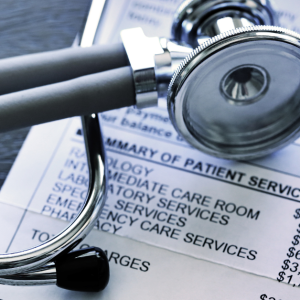When it comes to risk management in healthcare, access to multiple data signals helps formulate a far more accurate understanding of a provider’s risk profile than is possible when just one source of information is available. The same can be said for achieving the overall goals of the audit function, which are to reduce revenue leakage, enable faster payments, and avoid compliance issues; concentrating on just one data source can distort that picture and throw auditors off track in their mission to ensure clean claims.
Four Data Sources Equally Important to Auditors
The four main data sources are billing data, denial data, audit data, and external payer data. Together, these integrated risk signals provide a 360-degree view of claims, helping auditors determine where to focus their efforts to maximize revenues and reduce errors that can delay reimbursement or trigger outside audits.
Let’s examine the four data sources individually.
- Billing data. Minimizing errors on the front end can help improve revenues and lower days in accounts receivable (A/R days) because claims are accepted, approved, and reimbursed the first time. Users need intuitive software that can ingest current and historical claims data to help ensure that the proper billing and coding rules are followed, capturing sufficient charge data to support the claim fully.
- Denial data. By examining denial data, auditors can identify the coders, providers, procedures, and service lines where the most denials are taking place, prioritizing remediation and education efforts based on the greatest financial impact. Some issues may be traced to individual coders or providers, while others may be occurring across the organization. By digging into the details of these persistent errors, auditors can fix systemic issues and provide additional training to those who need it.
- Audit data. The audit process doesn’t end after issues are corrected, and the necessary personnel receive the training they need to become more compliant. Are those efforts actually paying off in terms of fewer denied claims and accurate reimbursements? Follow-up efforts are critical to determining whether further education is warranted. Audit data is particularly useful when monitoring more complex claims issues, such as entire service lines or particular sets of high-value DRGs.
- External payer data. Claims for Medicare recipients always face greater scrutiny, both proactively through Medicare Administrative Contractors (MACs) that examine Medicare Part A and Part B claims and durable medical equipment claims, and retrospectively through Recovery Audit Contractors (RACs). Their determinations can have an outsized impact on revenues, so auditors need to pay close attention to Medicare claims data.
Risk Management in Healthcare Is a Continuous Process
For organizations serious about maximizing their revenues and reducing denials through coding properly in the first place, risk management in healthcare should be a continuous improvement process. By focusing first on opportunities for revenue enhancement, auditors can monitor high-risk areas while addressing new and emerging risks.
Seek an integrated solution that helps reduce compliance risk, improve efficiency, and retain more revenue through workflow automation, risk monitoring, and built-in analytics and benchmarking capabilities in a single, integrated, cloud-based platform. The right toolset can uncover millions of dollars in inpatient and outpatient denials that go undetected by traditional claim validation systems.
By automating processes, auditors can be more efficient and have a greater impact on an organization’s bottom line.
To gain a deeper understanding of why risk-based auditing benefits the organization, check out Risk-Based Auditing: Why It May Be The Right Choice for Your Organization.








